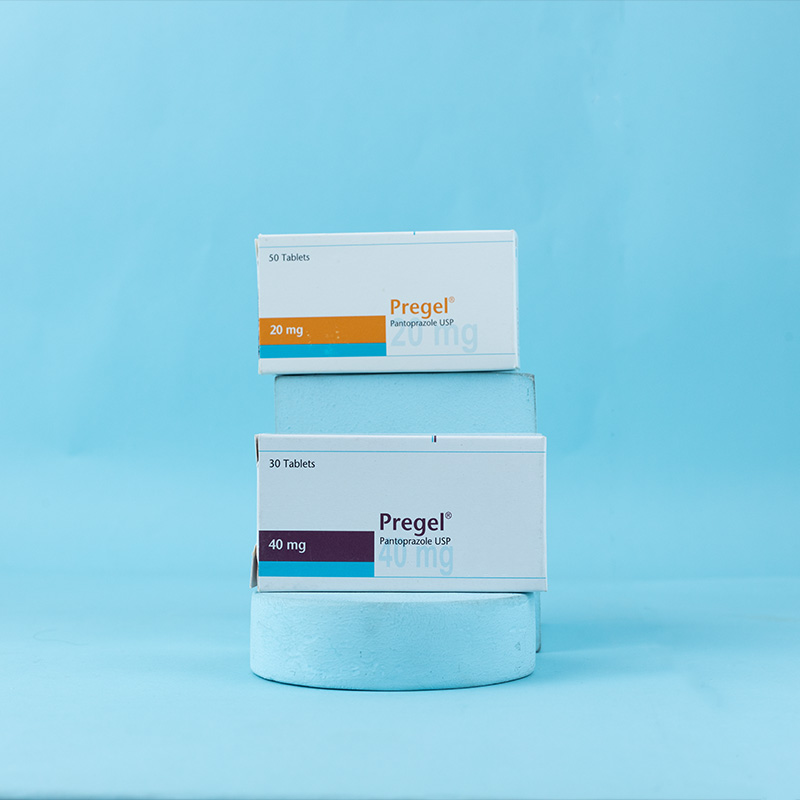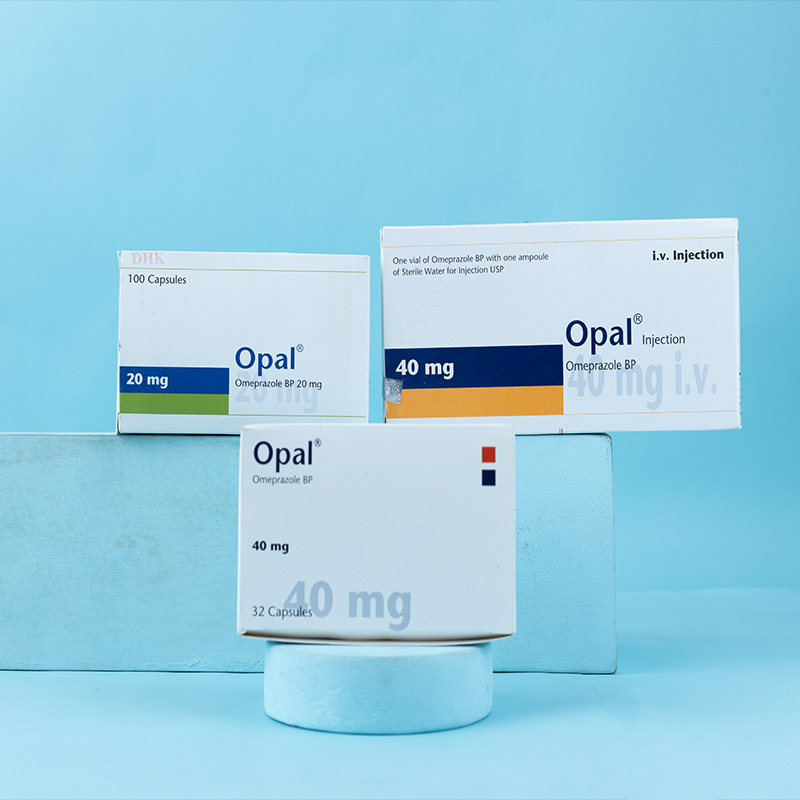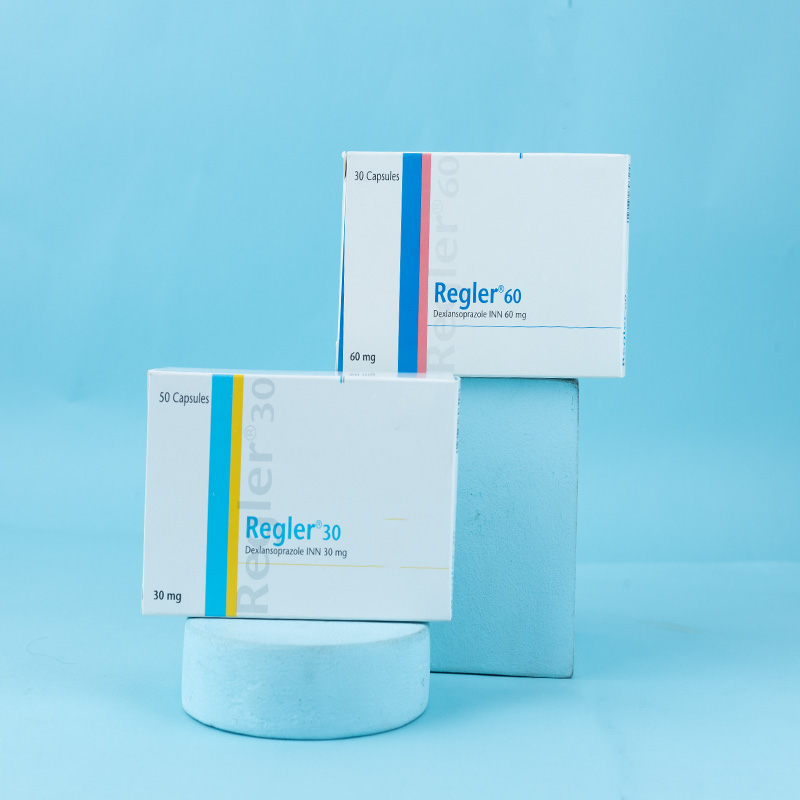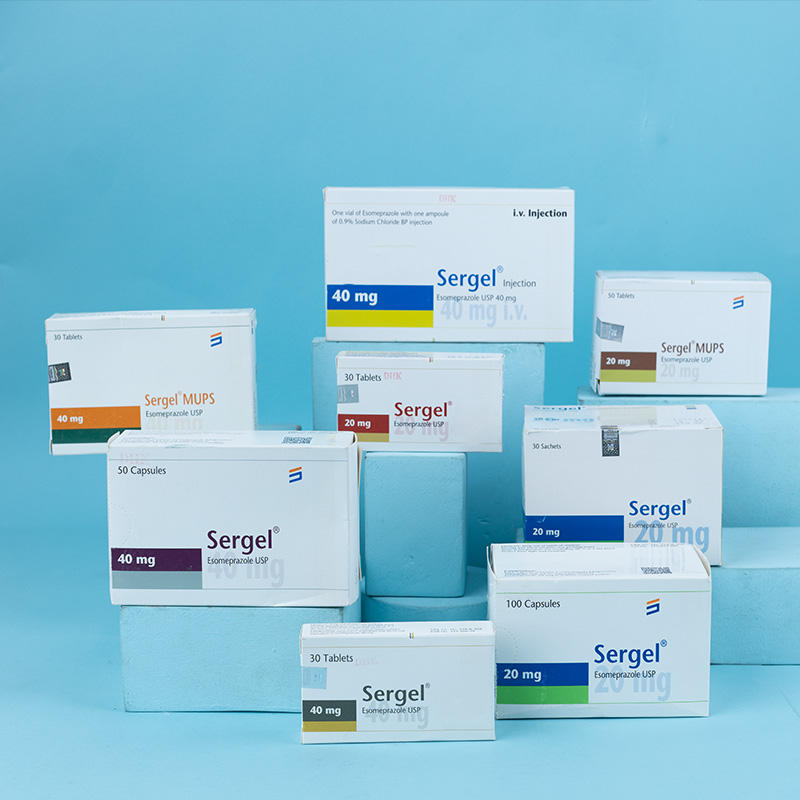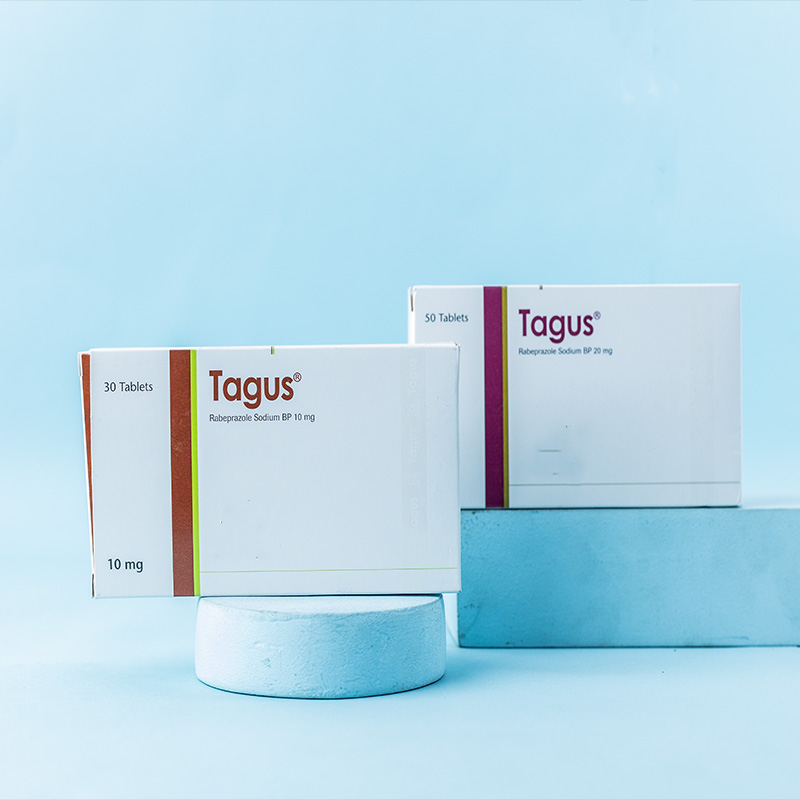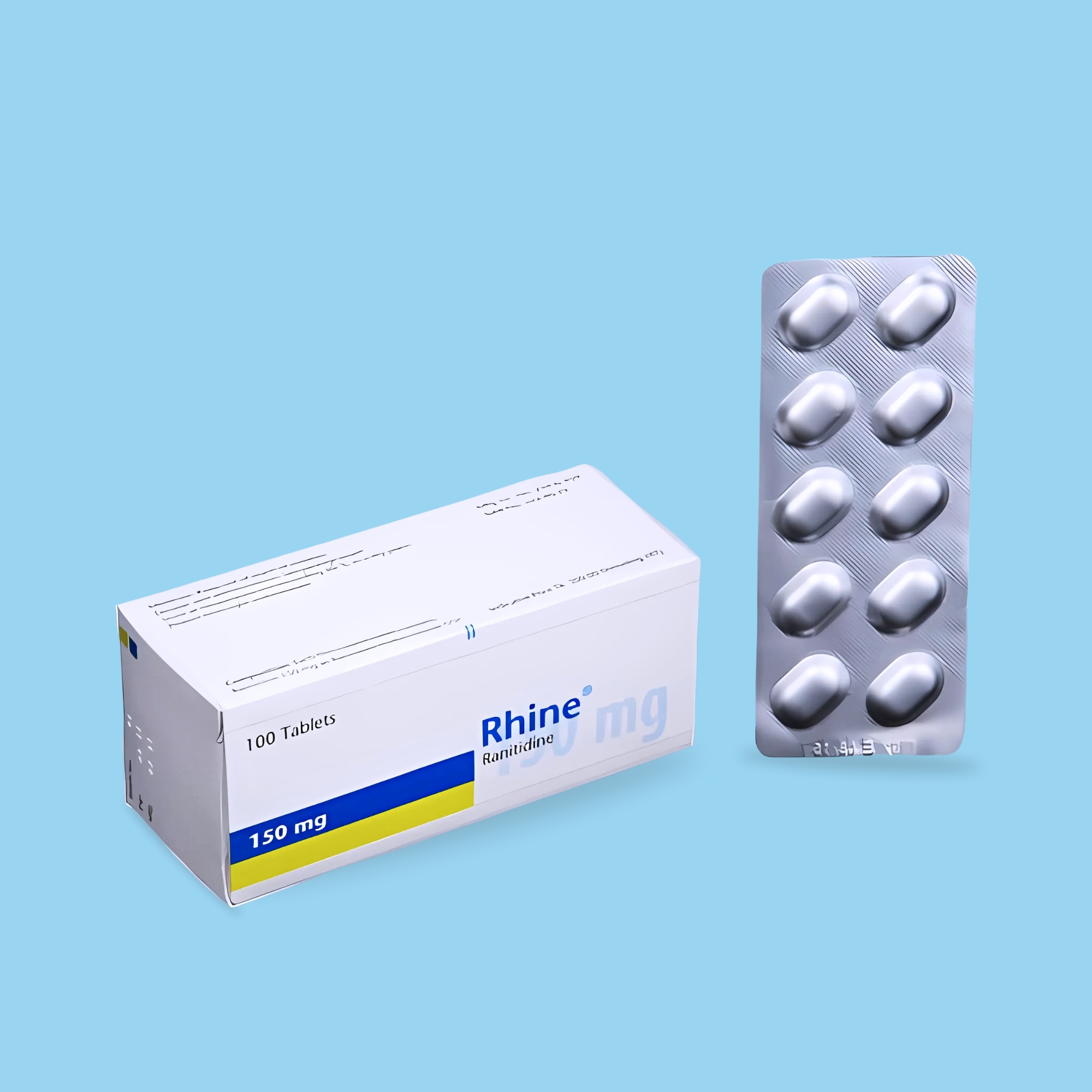Pregel® 20 mg Tablets: Each enteric-coated tablet contains Pantoprazole Sodium USP equivalent to Pantoprazole 20 mg.
Pregel® 40 mg Tablets: Each enteric-coated tablet contains Pantoprazole Sodium USP equivalent to Pantoprazole 40 mg.
Pregel® 40 mg IV Injection: Each vial contains Pantoprazole Sodium USP equivalent to Pantoprazole 40 mg.

Pantoprazole is a substituted benzimidazole that inhibits the secretion of hydrochloric acid in the stomach by specifically acting on the proton pumps of the parietal cells.

Symptomatic improvement and healing of gastrointestinal diseases requiring a reduction in acid secretion:
Duodenal ulcer
Gastric ulcer
Gastroesophageal reflux disease (GERD)
Treatment of mild reflux disease and associated symptoms (e.g., heartburn, acid regurgitation, pain on swallowing)
Reflux oesophagitis
Zollinger-Ellison Syndrome
Eradication of Helicobacter pylori (H. pylori) in combination with:
Clarithromycin and amoxicillin
Clarithromycin and metronidazole
Amoxicillin and metronidazole

Absorption
Pantoprazole is rapidly absorbed, with maximal plasma concentrations achieved even after a single oral dose. On average, maximum serum concentrations of about 1–1.5 μg/mL (20 mg tablets) and 2–3 μg/mL (40 mg tablets) are reached within 2.0–2.5 hours post-administration, remaining constant with repeated dosing.
Distribution
The volume of distribution is approximately 0.15 L/kg, with a clearance rate of about 0.1 L/hr/kg. The terminal half-life is approximately 1 hour.
Metabolism and Excretion
Some subjects exhibit delayed elimination. Due to the specific binding of pantoprazole to the proton pumps of parietal cells, the elimination half-life does not correlate with its longer duration of action (acid secretion inhibition). Pantoprazole is almost entirely metabolized in the liver, with renal excretion accounting for about 80% of metabolites, and the remainder excreted via feces. The primary metabolite is desmethylpantoprazole, conjugated with sulfate.
Bioavailability
Pantoprazole is completely absorbed after oral administration, with an absolute bioavailability of approximately 77%. Concomitant food intake does not influence the AUC, maximum serum concentration, or bioavailability, although it may increase lag-time variability.

Tablet
Duodenal Ulcer: One 40 mg gastro-resistant tablet daily. Healing typically occurs within 2 weeks, with an additional 2 weeks if necessary.
Gastric Ulcer: One 40 mg gastro-resistant tablet daily for 4 weeks, extendable to 8 weeks if required.
GERD: For mild reflux disease and associated symptoms, one 20 mg tablet daily for 2–4 weeks is recommended. For reflux oesophagitis, one 40 mg tablet daily for 4 weeks, extendable to 8 weeks if necessary.
Zollinger-Ellison Syndrome: One 40 mg gastro-resistant tablet daily.
NSAID-Induced Ulcers: One 20 mg tablet daily for prevention in at-risk patients requiring continuous NSAID treatment.
H. pylori Eradication: In patients with gastric or duodenal ulcers, one of the following combinations is effective:
Twice daily: 40 mg Pantoprazole, 1000 mg Amoxicillin, 500 mg Clarithromycin
Twice daily: 40 mg Pantoprazole, 500 mg Metronidazole, 500 mg Clarithromycin
Twice daily: 40 mg Pantoprazole, 1000 mg Amoxicillin, 500 mg Metronidazole
Injection
Replace intravenous pantoprazole with oral therapy as soon as possible.

Reconstitute by injecting 10 mL of 0.9% Sodium Chloride into the vial containing the dry powder. Use within 12 hours and store at 2–8°C. Administer over 2–15 minutes.

Pantoprazole should not be used in patients with known hypersensitivity to any of its components. It is contraindicated in combination therapy for H. pylori eradication in patients with moderate to severe hepatic or renal dysfunction due to limited safety data.

Monitor liver enzymes regularly in patients with severe liver impairment, especially during long-term use. Discontinue if enzyme levels rise.
Use during pregnancy and lactation only when benefits outweigh potential risks.
Renal Impairment: No dose adjustment needed.
Hepatic Impairment: Increased half-life and AUC values observed in patients with liver cirrhosis; however, dose adjustments are typically unnecessary.

Common side effects include:
Gastrointestinal complaints (e.g., abdominal pain, diarrhea, constipation, flatulence)
Headache and dizziness
Visual disturbances (e.g., blurred vision)

Pantoprazole may alter the absorption of pH-dependent drugs (e.g., ketoconazole). It is metabolized via cytochrome P450, but no significant interactions were observed with most commonly tested drugs.

There are no known symptoms of overdosage. Doses up to 240 mg administered intravenously over 2 minutes were well tolerated. In cases of overdosage, standard intoxication management should be applied.

Tablets: Store below 30°C in a dry place, protected from light.
Injection: Store below 25°C in a dry place, protected from light.
Warning: Keep out of reach of children.


